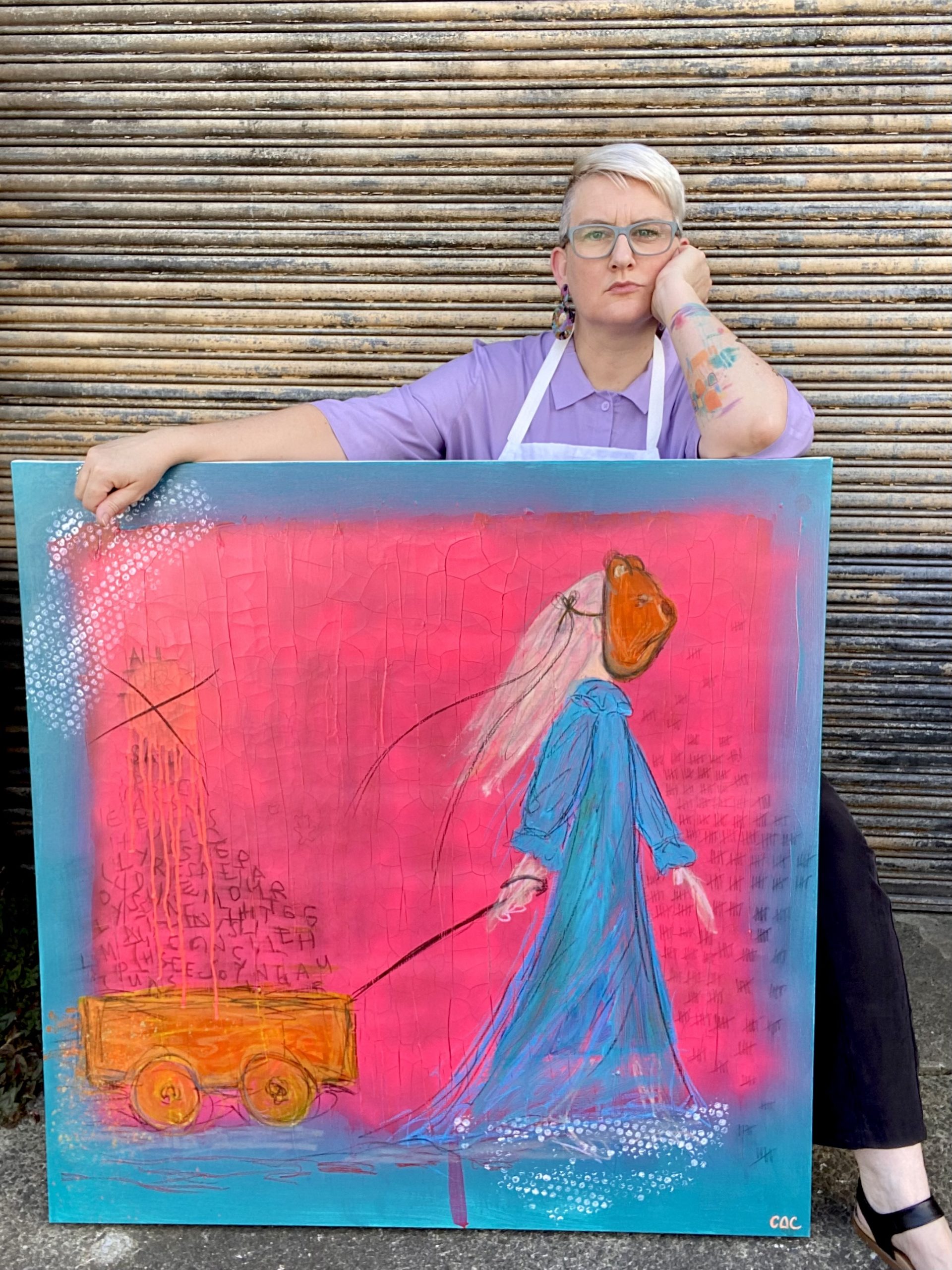art as therapy: painting the trauma of domestic violence

Emerging Artist Claire Cassey (Image Supplied)
Emerging Sydney artist, Claire Cassey, lived the first six years of her life as a child of domestic violence, often having to hide from her physically and emotionally abusive father. The imprint from that relationship followed her into adulthood and Claire lived through hell for over three years battling with the trauma inflicted by an abusive partner. But only now, sixteen years on and free, has she discovered how to use her love of art and, in particular, abstract painting, to help heal some of the longer lasting, unseen wounds. And in doing so, she hopes to show other victims of domestic violence the power of art as a therapy and means to cope.
‘It wasn’t until COVID arrived that I began painting and realised its therapeutic value, and [use it] to express how I was feeling through my art. COVID gave me the opportunity in terms of time as I was no longer commuting and was at home more, but the flipside was, my brain began working overtime, dredging up a lot of residual memories. I felt my mental health begin to deteriorate and I needed to find an outlet for my emotions,’ says Claire.

(Image: Supplied)
Using art as a form of therapy began in 1940, but it is only in the past twenty years that it has been recognised in Australia as a powerful tool to heal trauma.
Sydney based Registered Art Therapist, Justine Henderson, explains why art therapy can be so effective and why she is seeing a marked increase in adults seeking it as a means to cope since COVID: ‘A lot of adults have found themselves in challenging situations either at home or at work. Art therapy provides a safe way for them to connect with their feelings and emotions and provides an outlet for creative expression and play – which often is lost as we become adults. Art reconnects us with our identity. When we are creative, we express things that sometimes we don’t have the words for.’
‘I have seen an enormous increase in adults craving that lost connection and support; a sudden loss of connection with others brings up confrontation within ourselves and we begin to question our identity and where we fit in the world. The beauty of art as a form of therapy is that you don’t need to be an artist or have any level of skill or special equipment. You can start with anything; it could be as simple as a scrap piece of paper and a pencil or even using our finger in the sand or with a piece of chalk. That, and a good therapist to support you on your healing journey is a good start,’ explains Justine.
In Australia the impact of domestic violence is both alarming and sad:
- Childhood experiences of domestic and family violence can lead to greater likelihood of adult experiences of violence
- One woman every month is being killed due to some form of violence
- One in six women are living with some sort of abuse – sexual, physical from someone they know
- One in three men think punching a woman isn’t domestic violence
- Two thousand women, every night, seek shelter.
Claire now paints her experience through her art. One of her paintings, sadly depicting the number of times she was abused, uses a symbol of her childhood as a mask, a reflection of the emotional scarring.
Claire describes how the “unseen depression” is painted as the pretty colours but there are marks of black within the picture, not obviously visible, which reflect the so well-hidden pain of domestic violence victims.
Although Claire’s art raises awareness of domestic violence, she is very keen to spread the message of art as therapy and encourage other women to have a go and take up art as a way of expressing themselves, to heal and to cope with the everyday stress or greater traumas that arise and may challenge our mental health.
You can view Claire’s first solo exhibition, The Art of Self (diss)Respect, from May 10th to May 30th at Balmain Space (79 Beattie St, Balmain NSW 2041).

(Image: Supplied)

